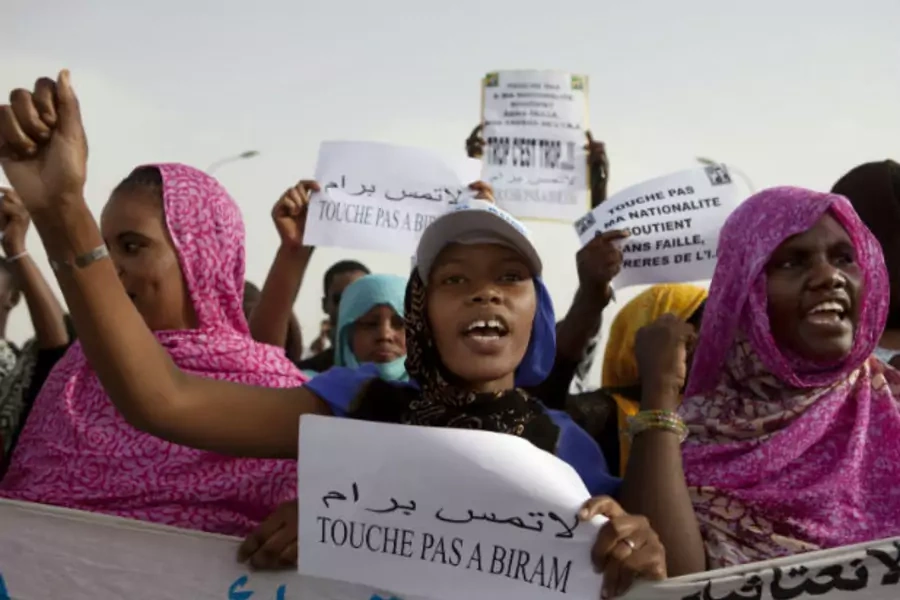More on:
This is a guest post by Emily Mellgard, research associate for the Council on Foreign Relations Africa Studies program.
The Australia based, Walk Free Foundation on Oct 17 published their first annual Global Slavery Index. The Index ranks 162 countries by how prevalent slavery is in each country and by absolute numbers of the population that is in slavery.
They use a comprehensive definition of slavery, including: “slavery, forced labor, or human trafficking. “Slavery” refers to the condition of treating another person as if they were property–something to be bought, sold, traded, or even destroyed. “Forced labor” is a related but not identical concept, referring to work taken without consent, by threats or coercion. “Human trafficking” is another related concept, referring to the process through which people are brought, through deception, threats, or coercion, into slavery, forced labor, or other forms of severe exploitation.” This broad definition aims to encompass three widely ratified and recognized international treaties: the Slavery Convention, the Forced Labor Convention, and the Trafficking Protocol.
Under this umbrella definition, Mauritania ranks highest on the prevalence of slavery in any country. Fully 25 percent of the population is deemed to be enslaved. The nine other nations with the highest prevalence are: Haiti, Pakistan, India, Nepal, Moldova, Benin, the Ivory Coast, the Gambia, and Gabon.
Half of the ten countries with the highest prevalence of slavery worldwide are African.
Walk Free also ranks countries by the absolute number of people in slavery. The ten countries with the most slaves are: India, China, Pakistan, Nigeria, Ethiopia, Russia, Thailand, the Democratic Republic of the Congo, Myanmar, and Bangladesh. Together these countries account for 76 percent of the 29.8 million people in slavery worldwide.
Countries with the lowest prevalence of slavery are: Denmark, Finland, Luxembourg, Norway, Sweden, Switzerland, New Zealand, the United Kingdom, Ireland, and Iceland. The United States ranks 134, with 57,000-63,000 enslaved people. Mauritius, with an Index rank of 143, has the least slavery in sub-Saharan Africa, Swaziland ranks 126, Angola ranks 116, South Africa ranks 115, Madagascar ranks 112, and Kenya ranks 102.
The Index uses pre-existing data. Some of which were collected by individual countries and by Kevin Bales at Free the Slaves. This is the first time however, that the data were collected together into a single report to provide a global overview of modern slavery.
Walk Free was founded in May 2012 by Andrew and Nicola Forrest. The aims of the foundation include: identifying countries and industries most responsible for modern slavery; identifying and implement interventions in those countries and industries that will have the greatest impact on modern slavery; and to critically assess the impact of these interventions. They believe that slavery can be, finally, eliminated with broad grassroots public support, legislative action, and socially responsible corporate policy.
More on:
 Online Store
Online Store
